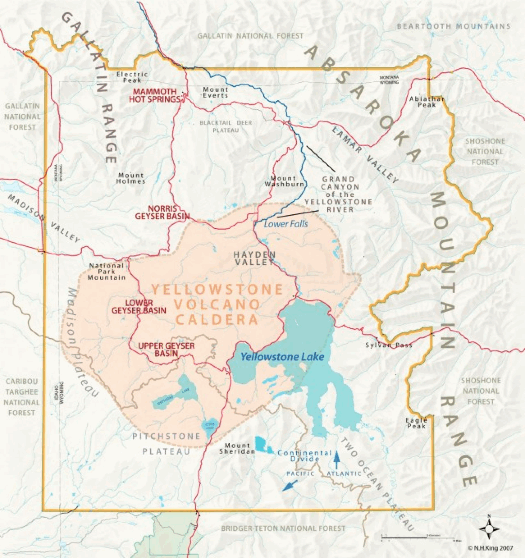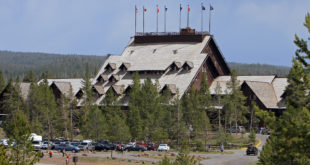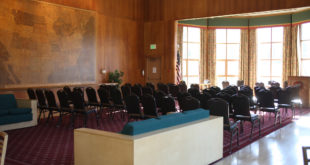
However, while the Yellowstone area is part of one of the world’s largest volcanoes -– a supervolcano –- it often doesn’t look or feel like that to visitors. For one thing, there is no classic volcanic cone-shaped mountain like Mauna Loa, or Mount St. Helens. There is no active crater with red hot lava jetting from it, such as Mauna Kea in Hawaii. Instead there is the gigantic but hardly visible Yellowstone caldera, the basin created by the last great explosion. Part of the basin was almost completely filled by lava, creating unspectacular plateaus, and another part of it became Yellowstone Lake. Most of the Yellowstone volcano is covered by rolling hills, deep forests, big lakes and rivers, and inhabited by thousands of animals. If it weren’t for the geysers and other hydrothermal features, to untrained eyes there would hardly be any reason to suspect volcanic activity. All of which means that Yellowstone is a safe volcano to visit; it’s not going to explode, or erupt lava, or even do much rumbling and grumbling. Not yet anyway and probably not for at least thousands of years. Meanwhile, geologists are monitoring this supervolcano, probing to discover the secrets of how volcanoes work, and measuring to know if changes are coming to Yellowstone’s activity. There will be warning if this giant starts to wake.
 Yellowstone Insider Your Complete Guide to America's First National Park
Yellowstone Insider Your Complete Guide to America's First National Park






